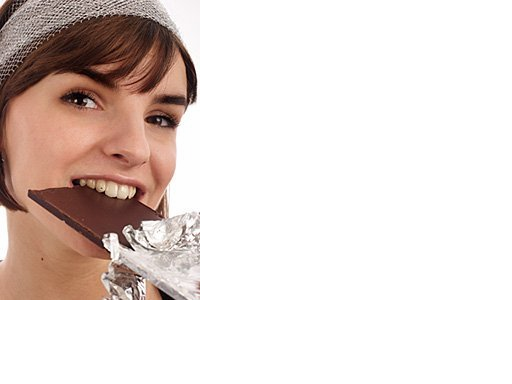Make Love with Bittersweet Chocolate

Dopamine, Oxytocin and the Chemistry of Love
Body chemistry lurks behind emotions and some common foods, like chocolate, can stimulate a chemical avalanche that stimulates more desires than you may know. But, as with love, prudence dictates that you don’t overindulge.

JUST THE mere mention of the word “chocolate” brings a smile to the faces of many, and for those aficionados, a gesticulating dance will ensue. What’s being celebrated here?
Pleasure!
It’s not unadulterated pleasure, but guilt may be the secret ingredient.
What’s not so secret, and a part of the enjoyment experienced by eating chocolate, is the sugar. Sugar is, well, sweet — and along with fat and salt, constitutes the trifecta of food elements nearly impossible to say “no” to.
But there’s another, much more hidden reason that the unbridled kinetic response we had as children to the prospect of a chocolate bar is largely unaffected by the sensibilities of adulthood. It’s the chemistry of love.
Chemical Love
You might think that what you love in another person is who they are, but a scientific view suggests that it’s the chemicals triggered in you by that person that produces the feeling of love.
Take phenylethylamine, for instance, or “PEA”, a natural amphetamine in your brain that when turned on gives you that extra glide in your stride. Your loved-one can stimulate PEA production, or you can get a non-romantic dose of it from bungee jumping, standing on a motorcycle seat while it speeds along at 90 mph, or… drum roll… eating chocolate!
Beyond being a “comfort food” par excellence, chocolate — like love — can spike dopamine levels in the brain. Dopamine is a neurochemical, a natural stimulant, that can make you feel ecstatic, focused, motivated, and, incidentally, cause arousal.
If that weren’t enough, dopamine stimulates the production of oxytocin, sometimes known as “the cuddle chemical.” Oxytocin is best known for its role in mothering, stimulating contractions during labor and aiding with breast feeding. And get this — oxytocin levels peak during orgasm.
Euphoria Too!
To round out this love chemical cocktail, let’s not give short shrift tonorepinephrine — a euphoria-inducing brain chemical that stimulates the production of adrenaline and makes your blood pressure soar when near the person you’re attracted to — as well as anandamide, known at the “bliss chemical”.
So, now that the love chemistry lesson is over, you might wonder if unprocessed chocolate could be possibly as good for your body as a well exercised libido, and happily, the simple answer is, YES… of course in small doses.
As LiveSuperfoods.com extols: “… the reputation of chocolate as a junk food should more accurately be attributed to the harmful effects of commercial processing and refining techniques, and various harmful ingredients commonly added to the coca in chocolate, most notably white sugar. All chocolate is made from the cacao (cocoa) bean, and cacao beans in their natural, unprocessed, unadulterated state are rich in nutrients and beneficial to health.” (Emphasis mine.)
For excellent detail about why unprocessed chocolate is good for you, read more at LiveSuperfoods.com here.
Last Updated on August 12, 2018 by Joe Garma


